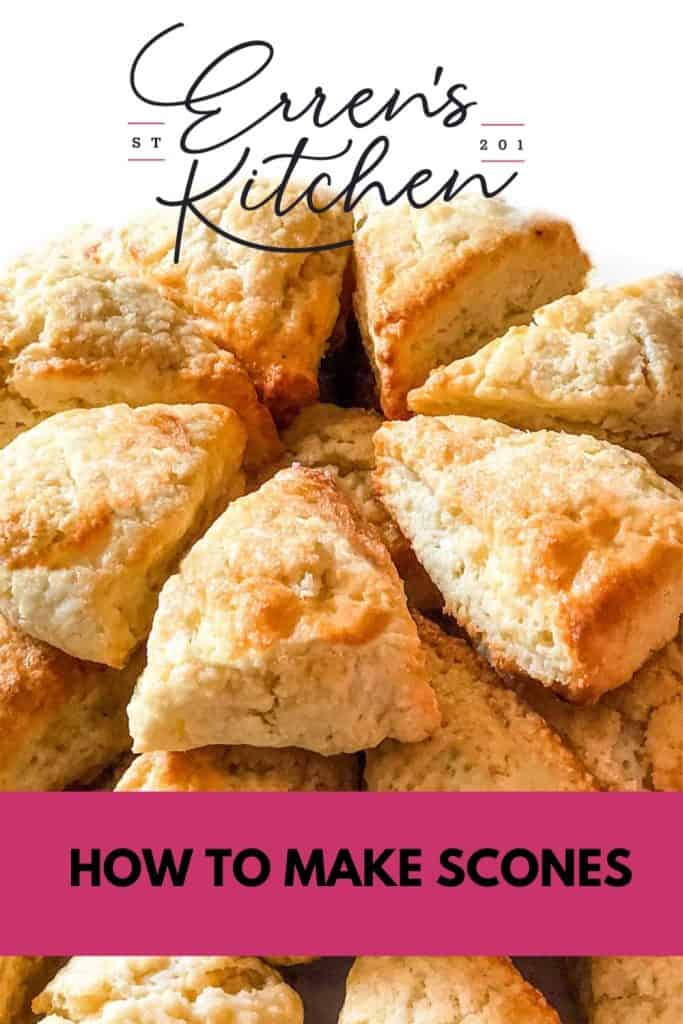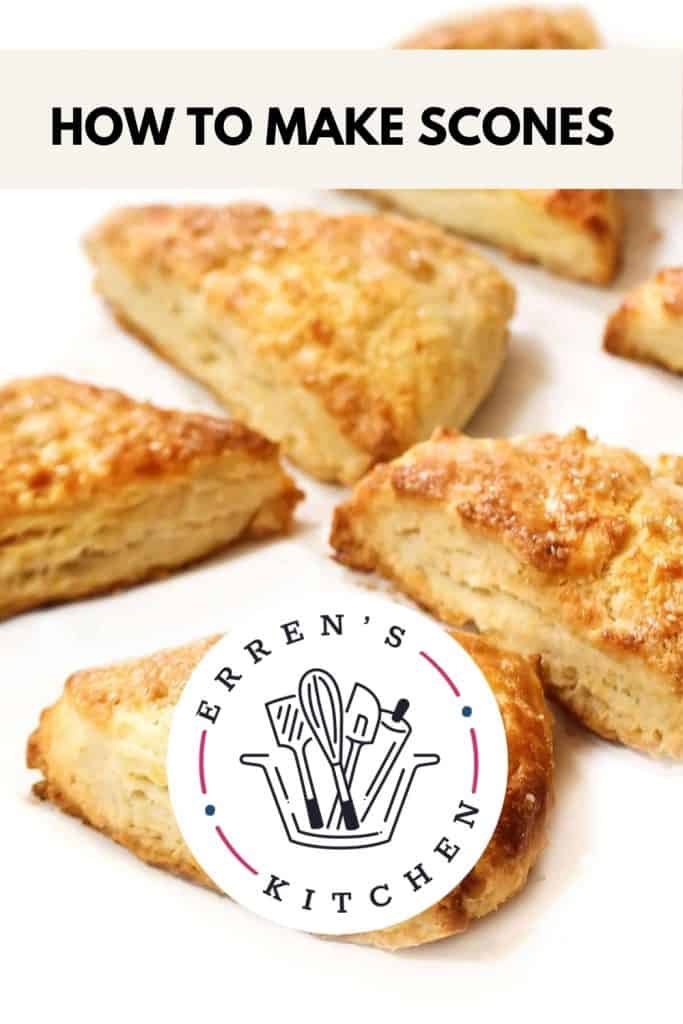With this guide on How to Make Scones, you’ll make delicious, tender scones that are perfect as is or enhanced with anything savory or sweet.
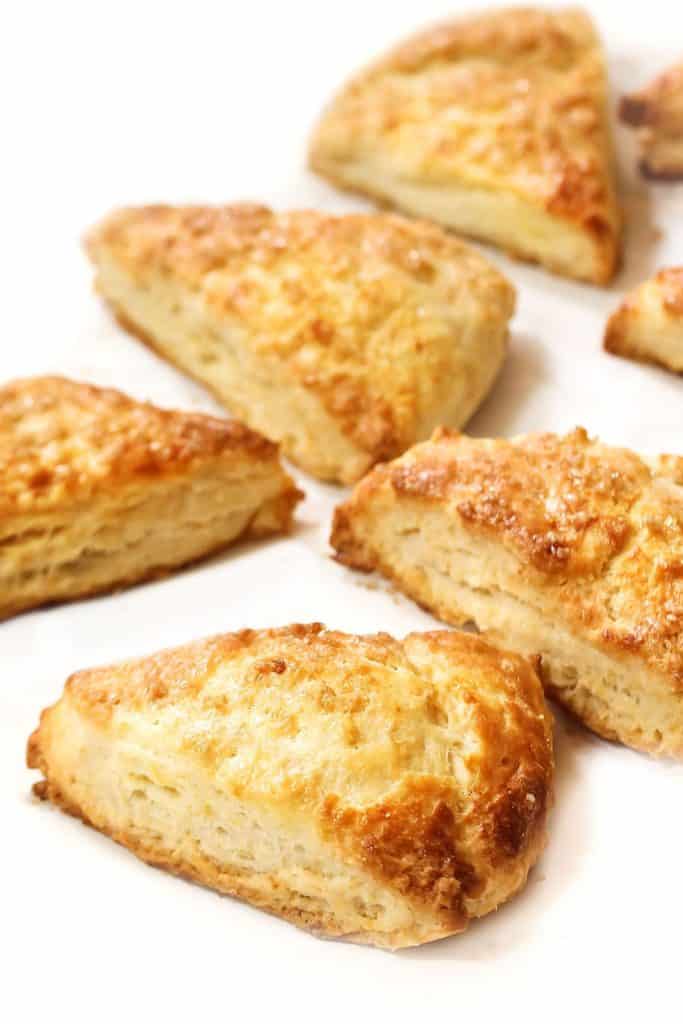

Scones are a buttery, flaky delight and I can never get enough of them. I have made a lot of scones in my time and have shared recipes for Blueberry Lemon Scones, Cinnamon Scones, Cranberry Scones, and more, but when it occurred to me that I hadn’t shared my basic scone recipe, I knew I had to get it out there!
These wonderful soft bakes are perfect for breakfast or an after-school treat. You can glaze them or add fruit or chocolate chips to make them extra special. This recipe gives you the basis to make your own ultimate scone!
Why This Recipe Works
- Using butter instead of shortening gives a delicious deep flavor.
- Using cream instead of milk results in a fluffier, more flavorful scone.
- Keeping them plain means you can choose your savory or sweet variations.
History Of Scones
Scones are believed to have originated in Scotland where the dough was originally made using oats and then shaped into a large round disk, scored into triangles. Then they were cooked on a griddle over an open fire or on the stovetop.
Ingredients Notes
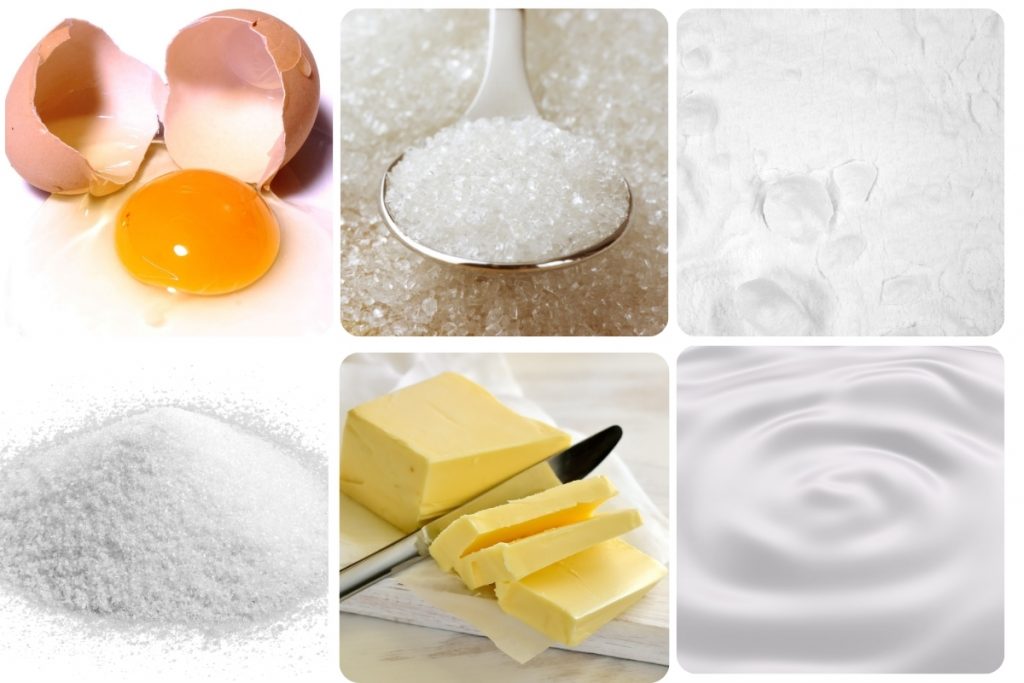

- Flour – Use good quality flour without too much protein as it can affect the flakiness of your scones. If you have a high protein flour, a mixture of plain and cake flour can be used for a lighter scone.
- Butter– I use butter instead of shortening as it adds flavor to the scones. Use cold butter as it will melt slower when baked producing a flakier, more crisp scone.
- Sugar– I use granulated sugar but superfine sugar will work just fine. If you’re making a savory scone, the sugar can be omitted.
- Baking powder– Use fresh baking powder that’s no longer than 6 months old
- Salt– Salt adds flavor. Just a teaspoon makes all the difference.
- Eggs – Use large, chilled eggs.
- Cream– Use high-fat content chilled cream. Cold liquids help to keep the butter from melting too soon. Avoid replacing the cream with milk as it yields a flatter, less flavorful scone.
Cutting In The Butter
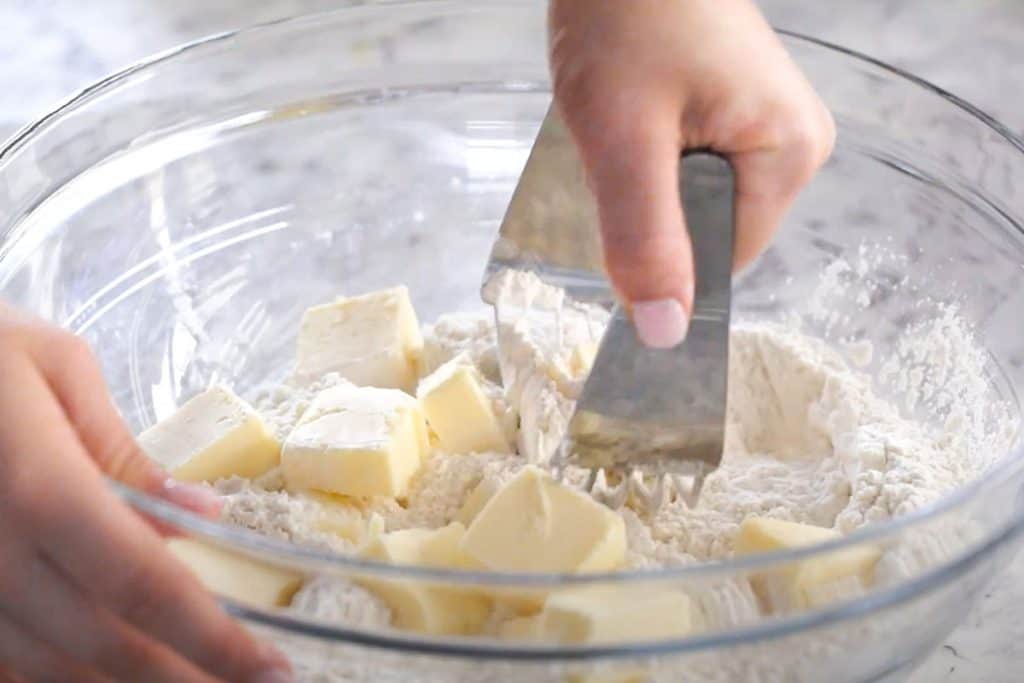

Working the butter into the dry ingredients is done using a technique called ‘cutting in’. This is done by cutting the butter into tiny pieces in the flour mixture until it resembles small flour-coated crumbs.
This can be done by hand using a pastry cutter, or fork or can also be by using a mixer or food processor. I recommend working by hand if you’re new to the process and move on to other methods once your skills advance.
For an easy alternative, you can also grate/shred frozen butter using a cheese grater and then toss it into the flour with your hands.
How to Make Scones
- Mix the dry ingredients together.
- Cut the butter into the flour mixture until crumbly.
- Mix the wet ingredients together until combined.
- Mix the wet ingredients into the dry and stir to combine.
- Roll out the dough and cut out the scones.
- Bake until golden.
- Serve and enjoy!
Step by Step Instructions
Add the dry ingredients to a bowl.
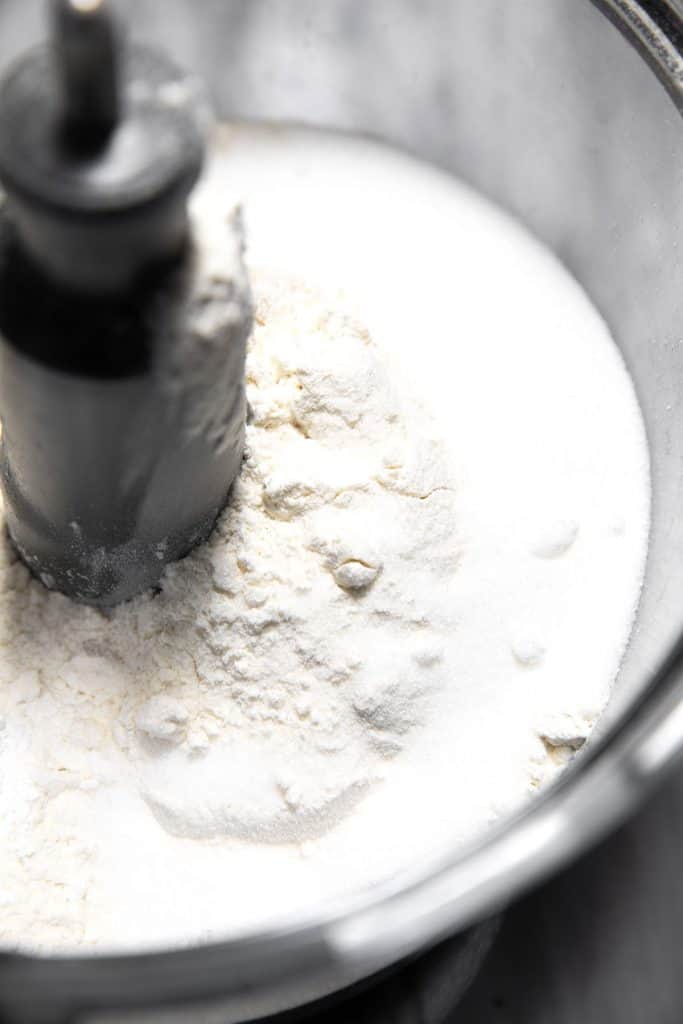

Mix well to combine and add the butter.
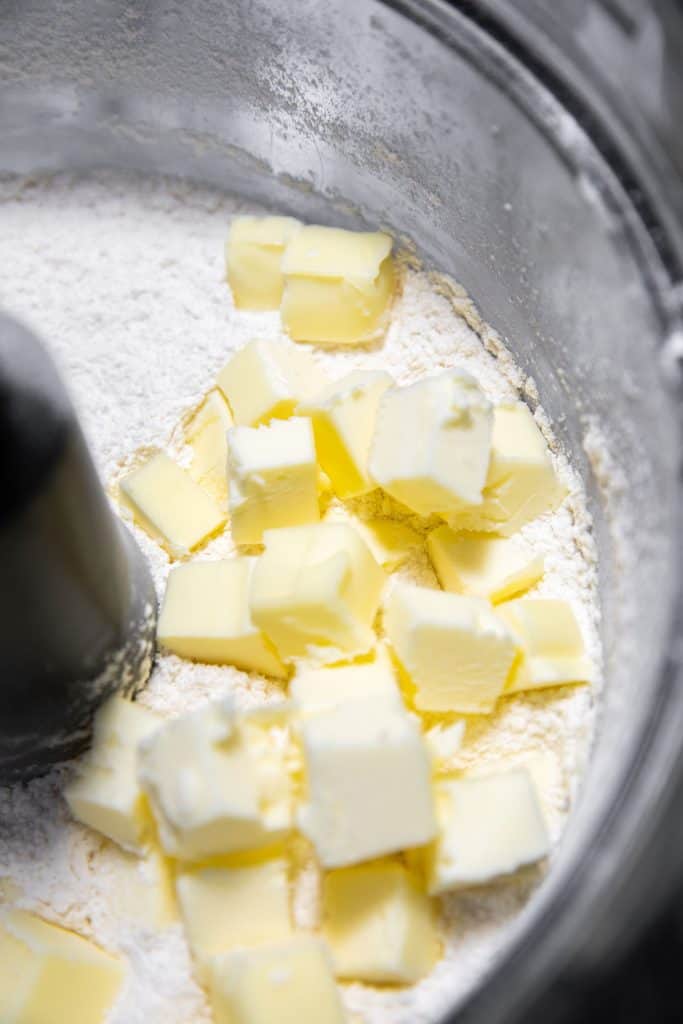

Cut the butter into the flour mixture until it resembles coarse bread crumbs.
To use a food processor, using the blade attachment, pulse until butter is cut up into the flour mixture and butter pieces are no longer visible.
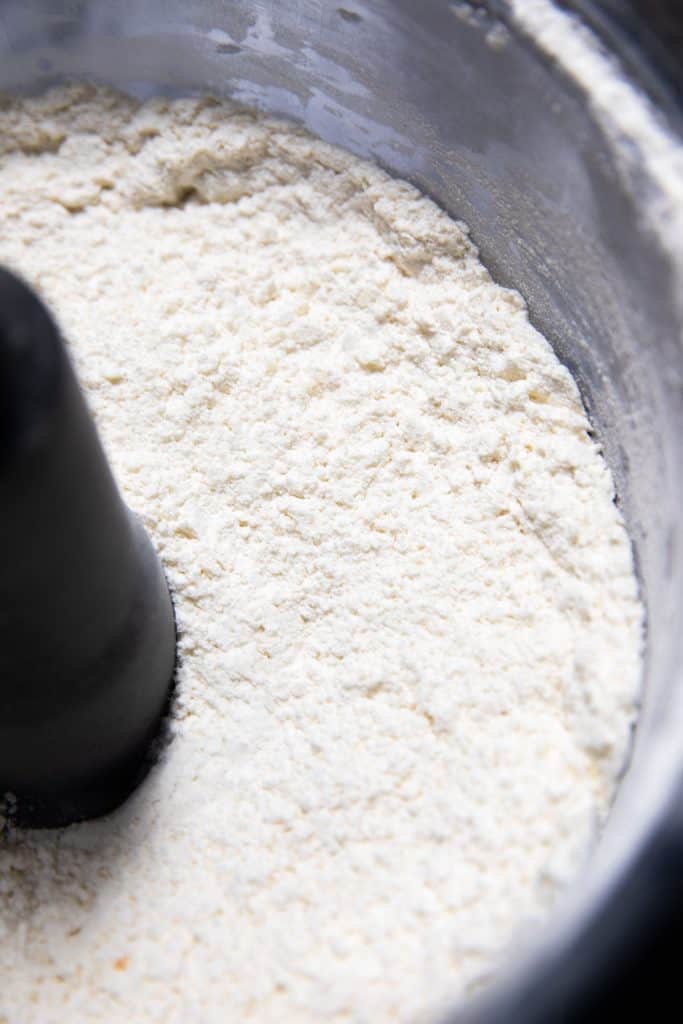

Whisk the cream and eggs together.
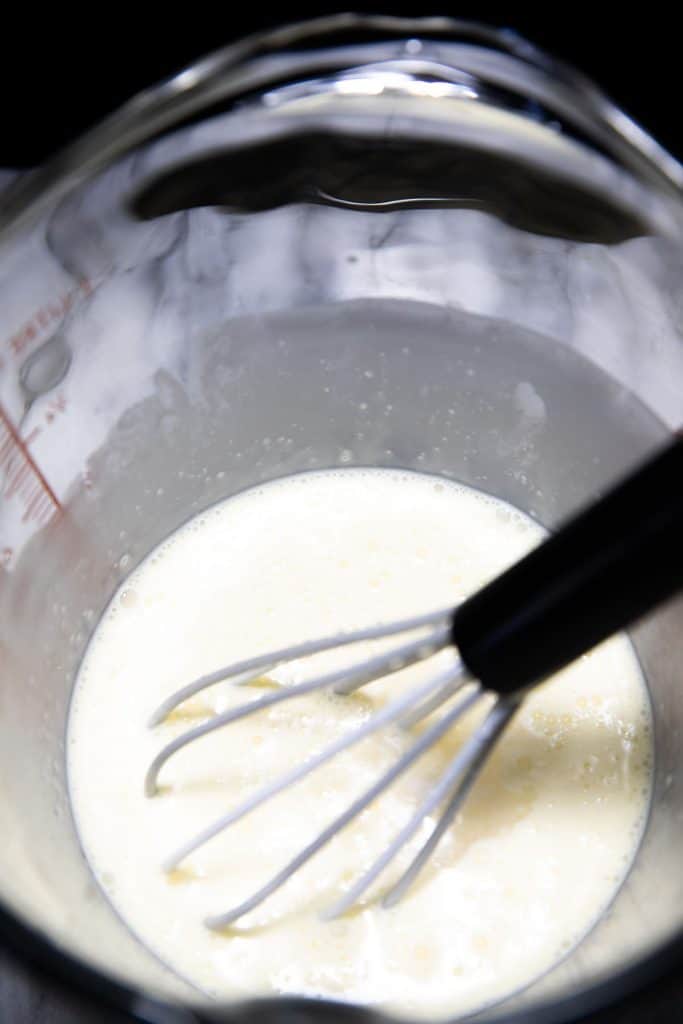

Add the wet mixture to the dry mixture.
At this point, you can also add the extras of your choice like fresh or dried fruit, chocolate chips or, even grated cheese and bacon (just omit the sugar)!
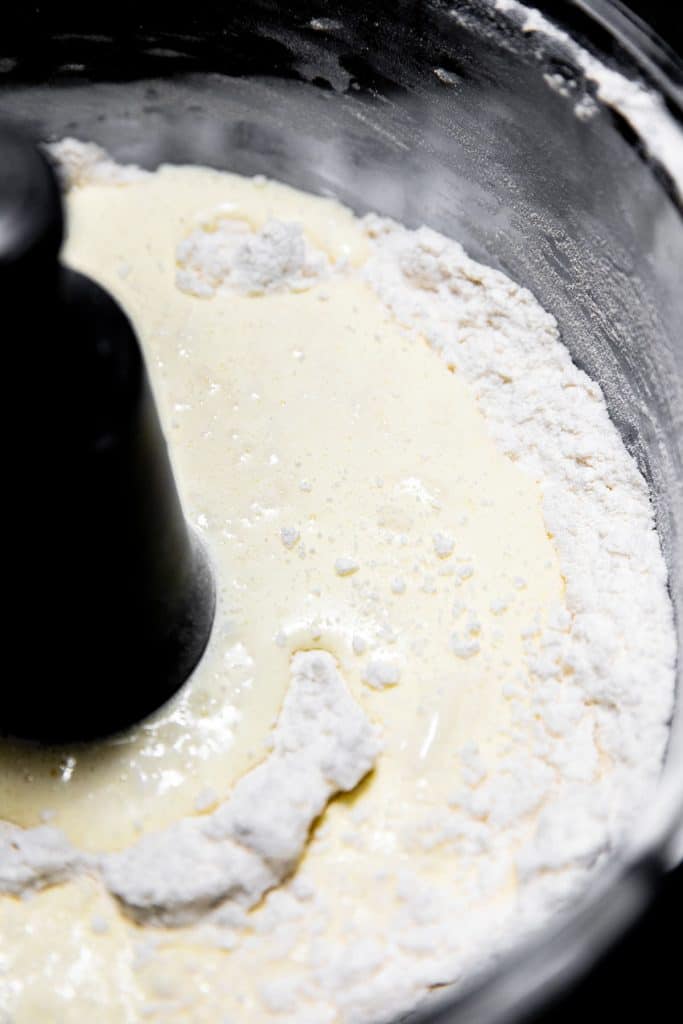

Mix just until combined.
To do this using a food processor, pulse just until dough begins to clump together.
Then and work it together in a ball, and flatten into a 7-inch circle.
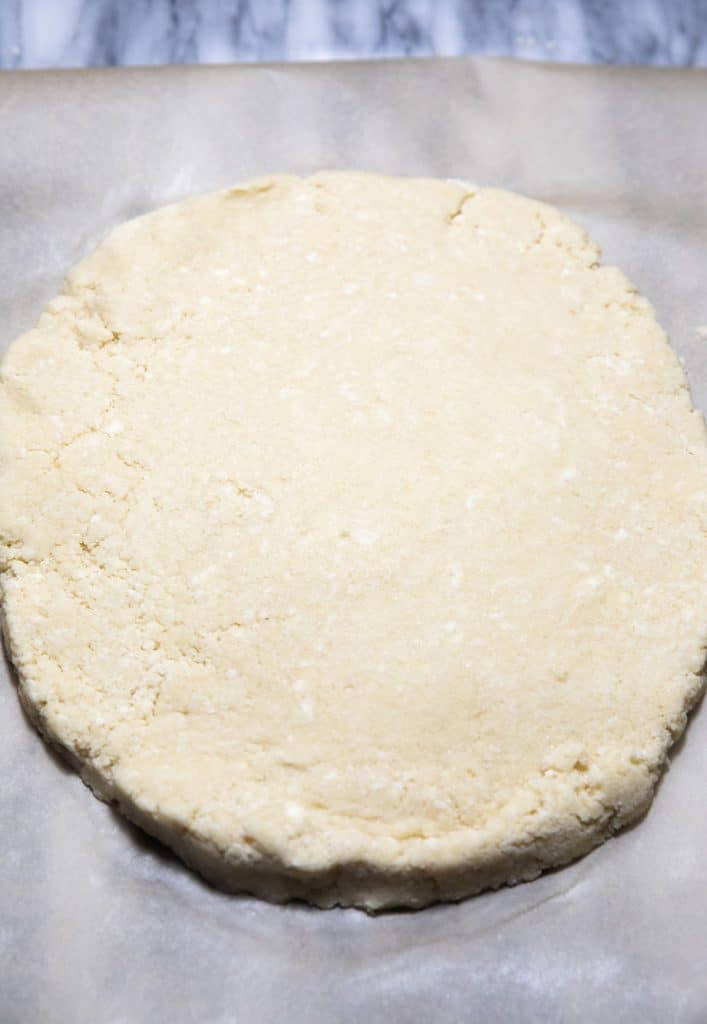

Cut the dough into 8 equal-sized pieces and place them on the prepared baking sheet.
Scones that are placed close together on the baking sheet will have softer sides. For scones that are crusty all over, place them further apart.
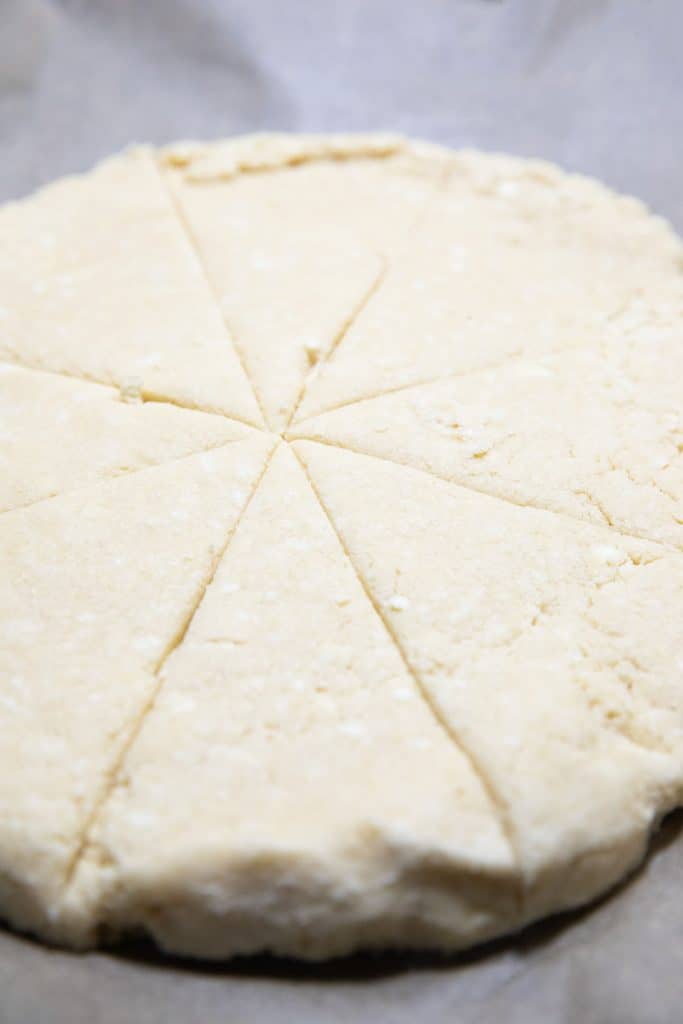

Brush the dough with heavy cream.
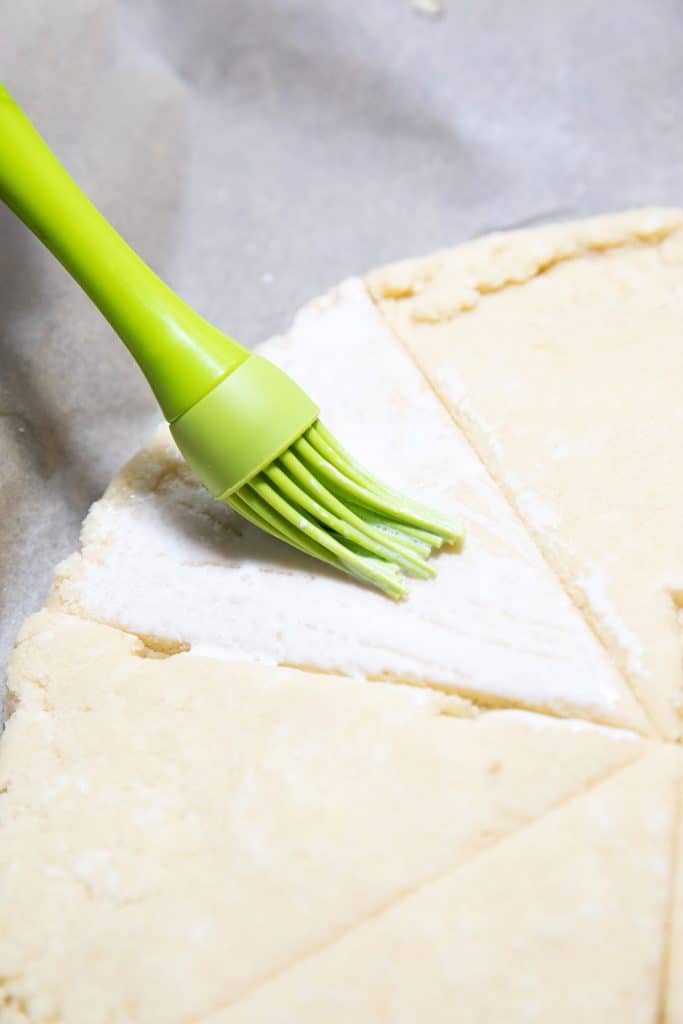

Bake until golden. Serve and enjoy!


Troubleshooting Scones
Below are common problems that take place when baking scones and what causes these pitfalls.
- Flat scones that spread when baked are usually caused by the dough being too soft or an oven that’s too hot.
- A dark color can be caused by too much sugar or an oven that runs hot.
- Heavy, dense scones can be caused by weak flour, overworked dough, or expired leveling agents.
- Tough and lacking flakiness can be caused by flour that’s too strong, a raising agent that is expired or not measured well, or an oven that’s not hot enough.
- Spottiness in color can be caused by uneven mixing.
Make ahead and Freezing Instructions
- To Freeze Before Baking: Freeze the dough wedges on a plate until frozen, then place them in a freezer-safe bag or container. Bake from frozen, by adding a few minutes to the baking time.
- Freeze After Baking: Allow the baked scones to cool completely then freeze (before adding the icing) in a freezer-safe bag or container. To thaw, leave at room temperature for a few hours. Then warm in the microwave for 20-30 seconds or on a baking sheet in a 300°F oven for 10 minutes.
- To Store Leftover glazed or un-glazed scones: Store at room temperature in an airtight container for 2 days or in the refrigerator for 5 days.
Erren’s Top Tips
- Sifting dry ingredients helps to combine them better.
- Grate frozen butter using a cheese grater and then toss it into the flour for a simple way to cut the butter into the flour.
- Start with cold butter, cream, and eggs. Using cold ingredients stops the butter from melting too soon, allowing it to melt as it bakes, creating a super-flaky scone
- Don’t overmix. This overdevelops the gluten in the flour, resulting in a tougher scone.
- For a golden finish, brush the scones with cream or an egg wash.
- Different cooling methods will produce varying textures of your scones. Uncovered scones will be crusty while wrapped or coved scones will be softer.
Other Great Scone Recipes
FAQs
To ensure your scones rise well and have a fluffy texture ensure your ingredients are all fresh. Also do not overwork your dough as this can cause them to become tough.
The secret to making scones is ensuring your butter, eggs and milk are cold. This helps to produce a tender crumb.
Your scones could be flat due to the raising agent you use not being fresh. Always remember to check the date.
Stay Updated
Receive new recipes & dinner ideas straight to your inbox!
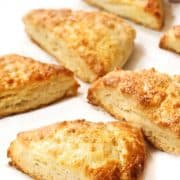

Let’s Make
How To Make Scones
These delicious scones are made with simple ingredients and are a perfect base for adding your favorite fruit.
Prep15 minutes
Cook20 minutes
Total35 minutes
Prevent your screen from going dark
Instructions
-
Preheat the oven to 375°F/190°C
-
If not using a good quality non-stick pan, line a cookie sheet with parchment paper and sprinkle with a dusting of flour. Set aside.
-
In a large bowl, sift together the flour, sugar baking powder, and salt.
-
Add the cubed butter into the flour mixture, coat, and work into the flour by hand using a pastry cutter or fork until it resembles large crumbs or with a food processor, pulse until butter is cut up into the flour mixture and butter pieces are no longer visible.
-
In a separate bowl, whisk together, the cream and eggs.
-
Pour the wet mixture into the mixer. Combine until it forms a dough being careful not to overmix. If it’s too sticky or wet, add a little more flour. If the mixture seems too dry add more cream until the dough comes together.
-
Work the dough together into a ball, then flatten into a 7-inch circle. Cut the dough into 8 equal-sized pieces and place them on the prepared baking sheet, making sure to leave a little room between each one.
-
Place the baking sheet in the freezer for 10 minutes (or fridge for 15 minutes) or until the scones are chilled. You can even refrigerate overnight for a quick breakfast in the morning.
-
When ready to bake Brush the tops of the scones with cream (or an eggwash for an extra golden finish).
-
Bake the scones for about 20 minutes until lightly browned. Allow the scones to cool for at least 10 minutes before serving.
Tips + Notes
PLEASE NOTE
If you are outside the US or Canada, Please use the Metric recipe (by clicking the metric button above the ingredients in the recipe). Ingredients like flour and butter are different from country to country. The metric recipe is not a conversion but a recipe that differs according to the ingredients available in your region (when I lived in the UK, I created the metric recipe using European ingredients). Happy Baking!
Tips:
- Sifting dry ingredients helps to combine them better.
- Grate frozen butter using a cheese grater and then toss it into the flour for a simple way to cut the butter into the flour.
- Start with cold butter, cream, and eggs. Using cold ingredients stops the butter from melting too soon, allowing it to melt as it bakes, creating a super-flaky scone
- Don’t overmix. This overdevelops the gluten in the flour, resulting in a tougher scone.
- For a golden finish, brush the scones with cream or an egg wash.
- Different cooling methods will produce varying textures of your scones. Uncovered scones will be crusty while wrapped or coved scones will be softer.
Nutrition Information:
Calories: 426 (21%)| Carbohydrates: 51g (17%)| Protein: 6g (12%)| Fat: 23g (35%)| Saturated Fat: 14g (88%)| Trans Fat: 1g| Cholesterol: 71mg (24%)| Sodium: 407mg (18%)| Potassium: 379mg (11%)| Fiber: 1g (4%)| Sugar: 13g (14%)| Vitamin A: 792IU (16%)| Vitamin C: 1mg (1%)| Calcium: 160mg (16%)| Iron: 2mg (11%)
Nutritional Data Disclaimer

